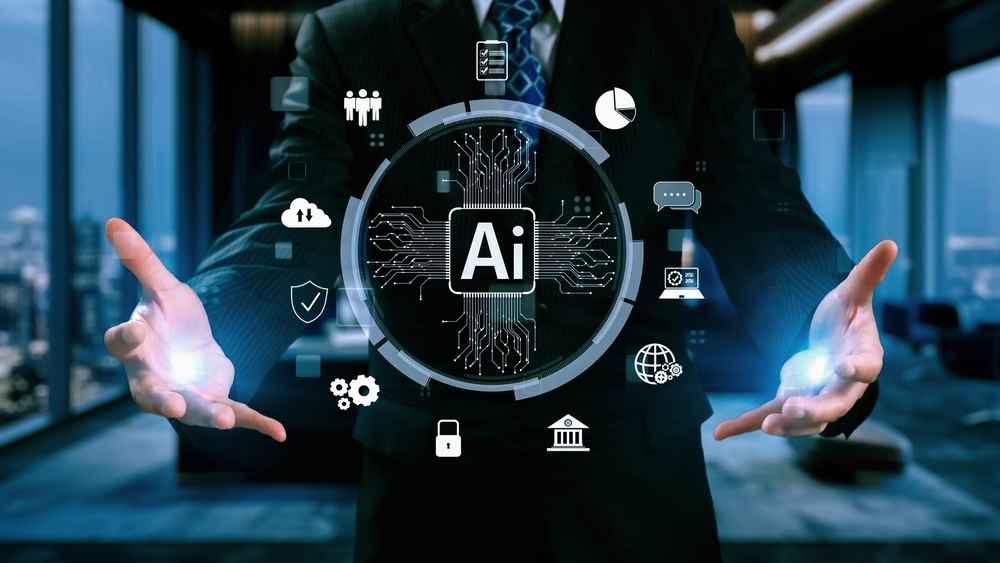In our previous post, we demystified Artificial Intelligence, Machine Learning, and Deep Learning, highlighting their presence in our daily lives. Now, let’s pull back the curtain and explore the fascinating mechanisms that power these intelligent systems. Understanding ‘how AI works’ involves delving into key concepts like Machine Learning algorithms, Natural Language Processing, Computer Vision, and the crucial aspect of Ethical AI.
The Engine of AI: Machine Learning
Machine Learning (ML) is the driving force behind much of today’s AI. Instead of being explicitly programmed for every scenario, ML models learn from data. This learning process can be broadly categorized into:
•Supervised Learning: The model learns from labeled data, where both the input and the desired output are provided. For example, an ML model trained to identify spam emails learns from a dataset of emails already marked as ‘spam’ or ‘not spam’.
•Unsupervised Learning: The model identifies patterns and structures in unlabeled data. This is useful for tasks like customer segmentation, where the model groups similar customers without prior knowledge of their categories.
•Reinforcement Learning: The model learns by interacting with an environment, receiving rewards for desired actions and penalties for undesired ones. This is akin to training a pet, where positive reinforcement encourages good behavior. This approach is often used in robotics and game playing.
At the heart of many ML applications are Neural Networks, inspired by the human brain’s structure. These networks consist of interconnected nodes (neurons) organized in layers. Data flows through these layers, with each connection having a ‘weight’ that adjusts during training, allowing the network to ‘learn’ complex patterns and make predictions.
AI That Understands Us: Natural Language Processing (NLP)
Natural Language Processing (NLP) is the branch of AI that enables computers to understand, interpret, and generate human language. From the simple act of searching on Google to sophisticated chatbots, NLP is at play. Key applications include:
•Sentiment Analysis: Determining the emotional tone behind a piece of text, crucial for understanding customer feedback or social media trends.
•Machine Translation: Automatically translating text or speech from one language to another.
•Chatbots and Virtual Assistants: Powering conversational AI that can respond to queries, provide information, and even engage in natural dialogue.
AI That Sees: Computer Vision
Computer Vision is the field of AI that trains computers to ‘see’ and interpret visual information from the world, much like humans do. This involves enabling machines to process, analyze, and understand images and videos. Applications are vast and growing:
•Image Recognition: Identifying objects, people, places, and actions in images. This is used in everything from facial recognition to medical imaging analysis.
•Object Detection: Locating and classifying specific objects within an image or video, vital for autonomous vehicles and surveillance systems.
•Augmented Reality (AR): Overlaying digital information onto the real world, often relying on computer vision to understand the environment.
The Cornerstone: Ethical and Responsible AI
As AI becomes more powerful and pervasive, the importance of developing and deploying it ethically cannot be overstated. Ethical AI focuses on ensuring that AI systems are:
•Fair: Free from biases that could lead to discriminatory outcomes.
•Transparent: Their decision-making processes are understandable and explainable.
•Accountable: There are clear lines of responsibility for their actions.
•Secure: Protected from malicious attacks and misuse.
MindTraxAI is committed to responsible AI development, ensuring our solutions are not only innovative but also align with the highest ethical standards. This commitment is vital for building trust and ensuring AI benefits all of society.
AI in Business: Real-World Impact
Businesses across industries are leveraging these AI capabilities to drive transformation:
•Optimizing Operations: AI can analyze vast datasets to identify inefficiencies and optimize processes, from supply chain management to energy consumption.
•Enhanced Decision-Making: Predictive analytics powered by ML helps businesses make informed decisions about everything from sales forecasting to risk assessment.
•Customer Experience: NLP-driven chatbots and personalized recommendations enhance customer interactions and satisfaction.
•Innovation: Computer vision is enabling new possibilities in manufacturing, quality control, and even personalized marketing.
Understanding these core mechanisms of AI is crucial for anyone looking to harness its power effectively. In our final blog post, we will explore the cutting-edge frontiers of AI, including Large Language Models, Multimodal AI, and the future of AI agents.
The Cornerstone: Ethical and Responsible AI
As AI becomes more powerful and pervasive, the importance of developing and deploying it ethically cannot be overstated. Ethical AI focuses on ensuring that AI systems are:
•Fair: Free from biases that could lead to discriminatory outcomes.
•Transparent: Their decision-making processes are understandable and explainable.
•Accountable: There are clear lines of responsibility for their actions.
•Secure: Protected from malicious attacks and misuse.
MindTraxAI is committed to responsible AI development, ensuring our solutions are not only innovative but also align with the highest ethical standards. This commitment is vital for building trust and ensuring AI benefits all of society.
AI in Business: Real-World Impact
Businesses across industries are leveraging these AI capabilities to drive transformation:
•Optimizing Operations: AI can analyze vast datasets to identify inefficiencies and optimize processes, from supply chain management to energy consumption.
•Enhanced Decision-Making: Predictive analytics powered by ML helps businesses make informed decisions about everything from sales forecasting to risk assessment.
•Customer Experience: NLP-driven chatbots and personalized recommendations enhance customer interactions and satisfaction.
•Innovation: Computer vision is enabling new possibilities in manufacturing, quality control, and even personalized marketing.
Understanding these core mechanisms of AI is crucial for anyone looking to harness its power effectively. In our final blog post, we will explore the cutting-edge frontiers of AI, including Large Language Models, Multimodal AI, and the future of AI agents.

